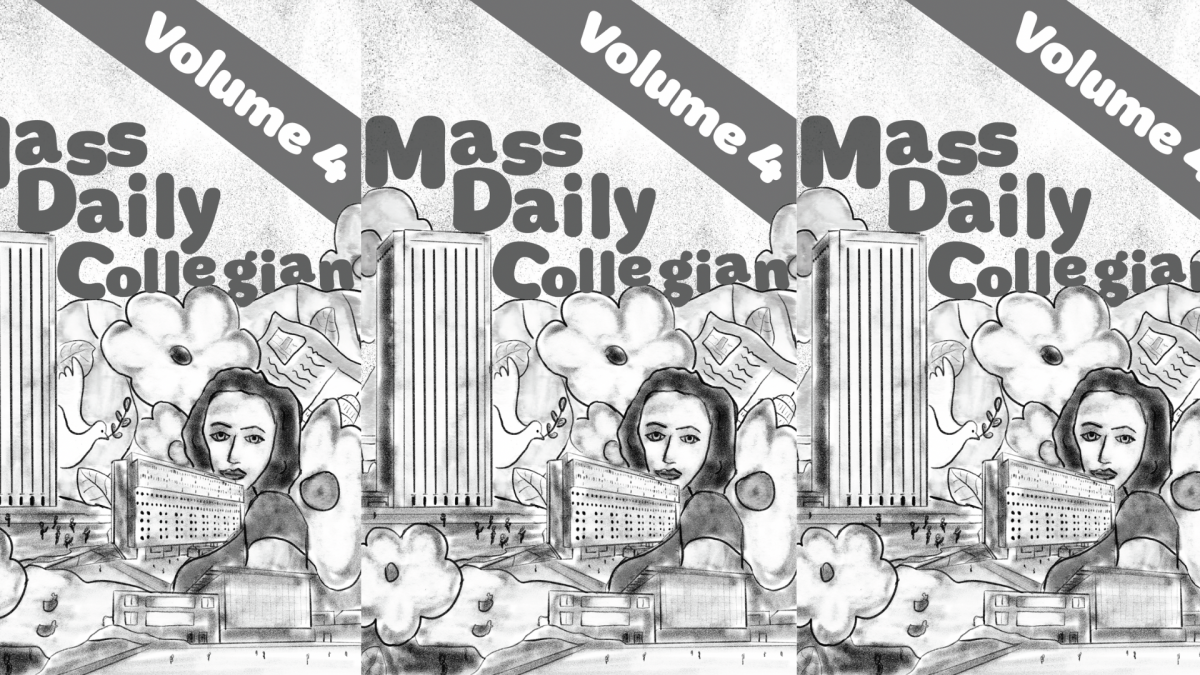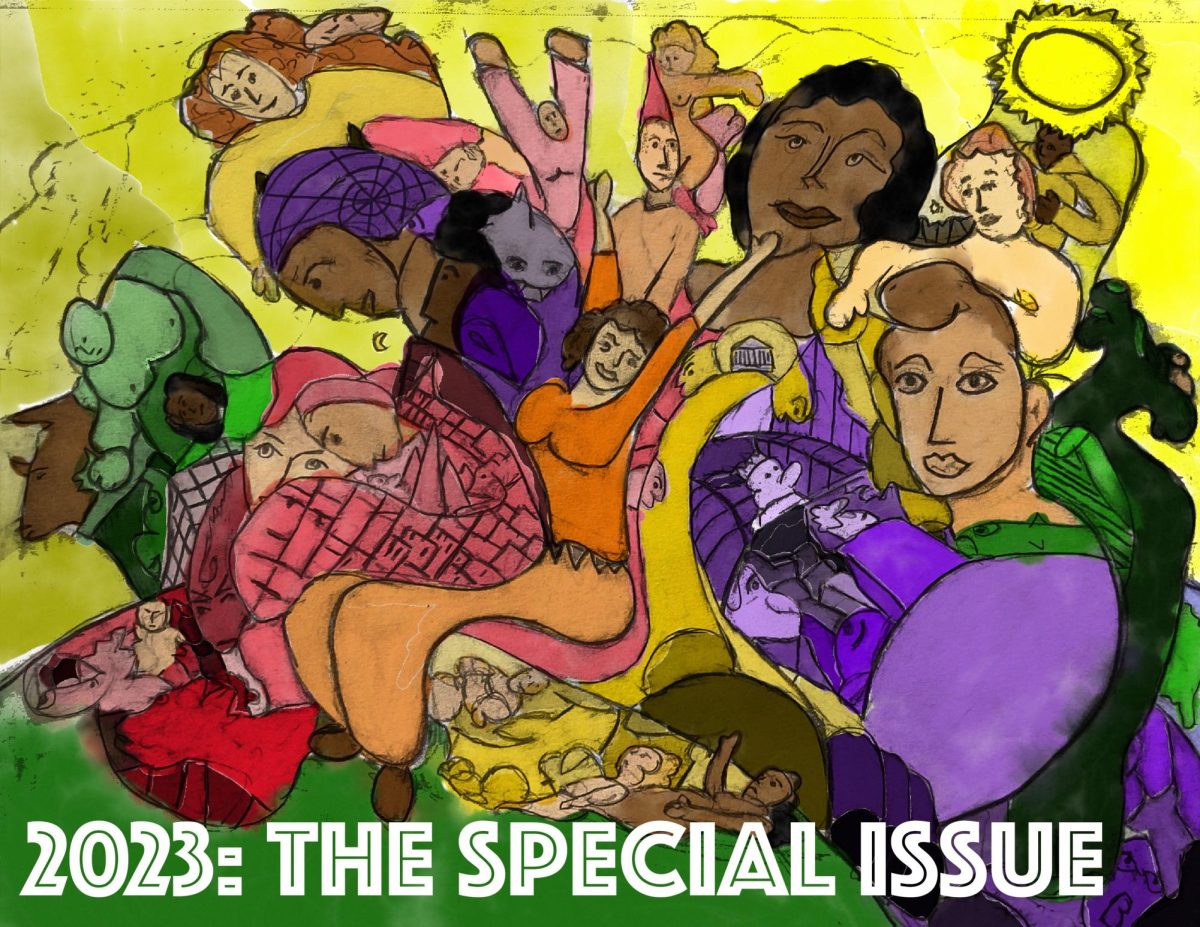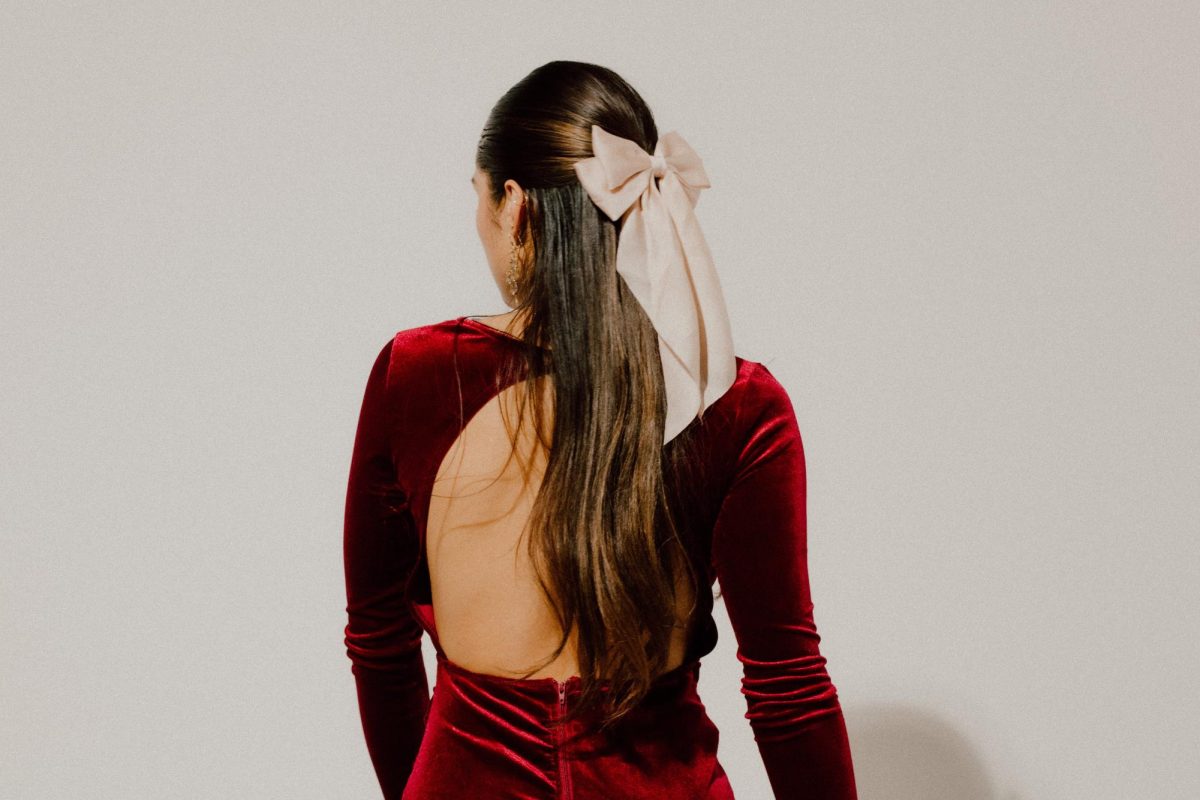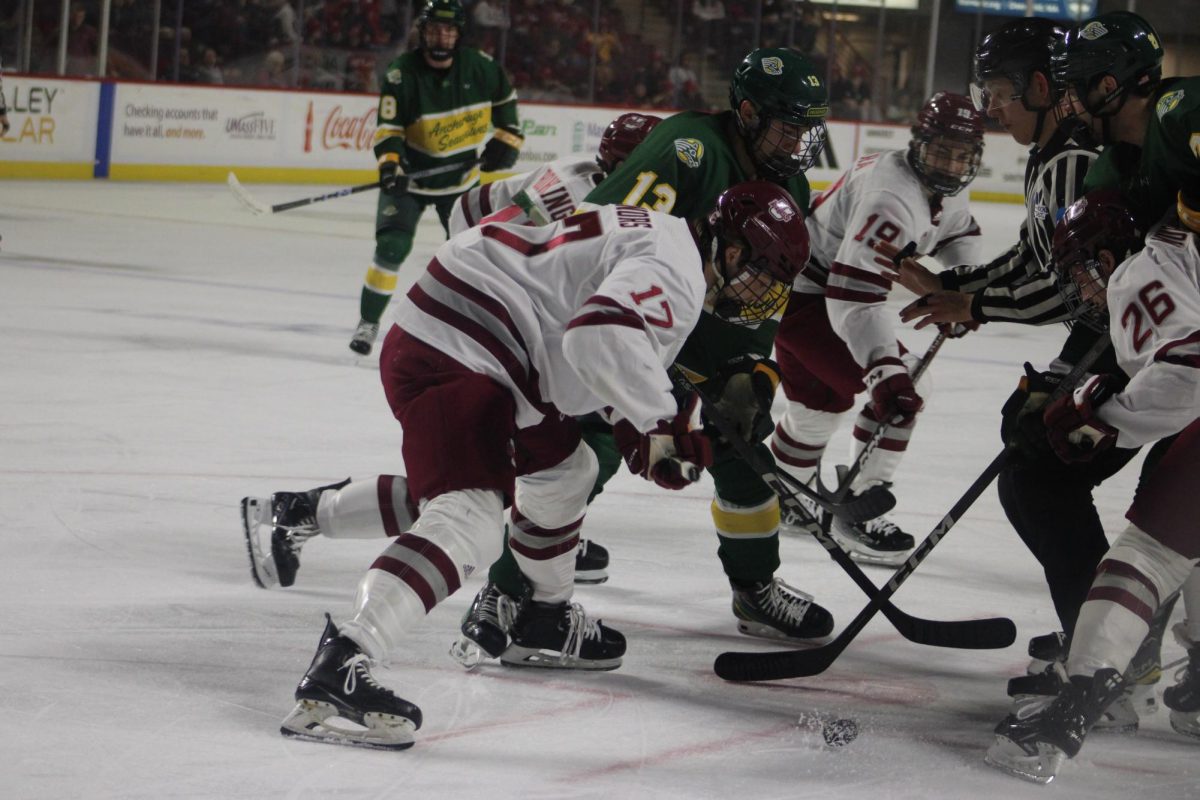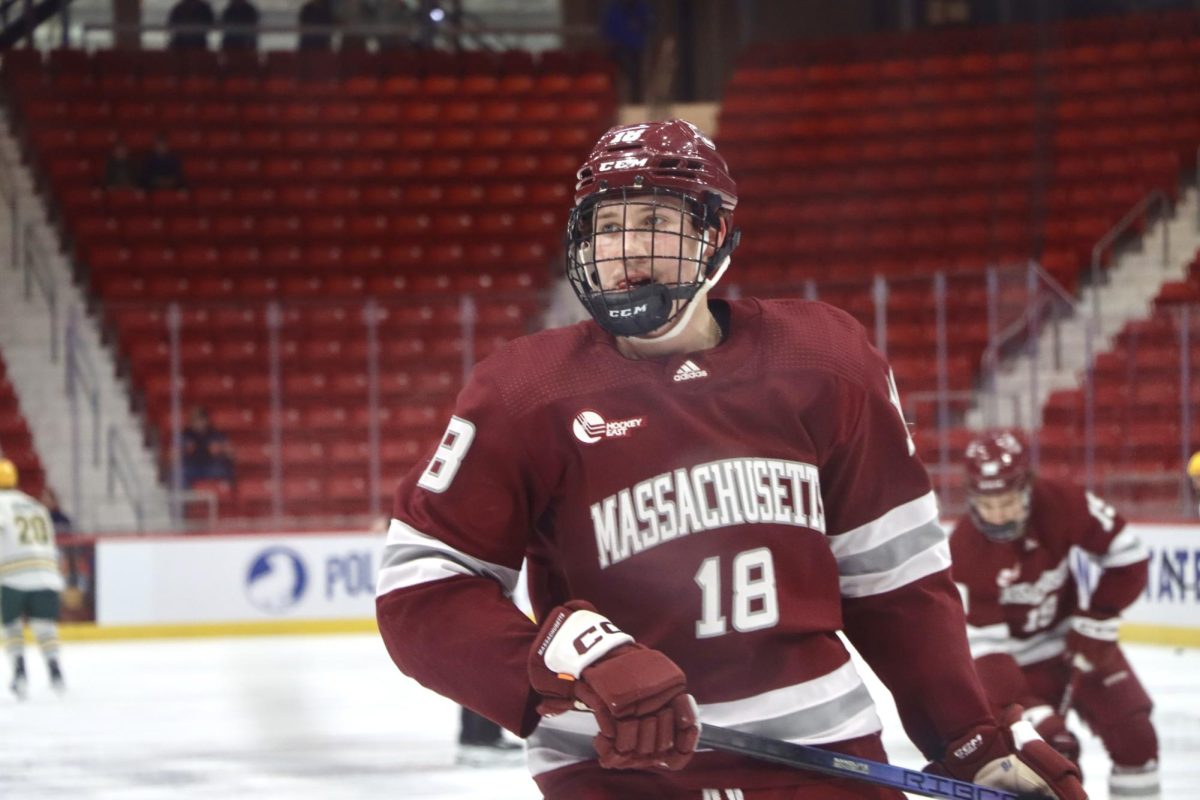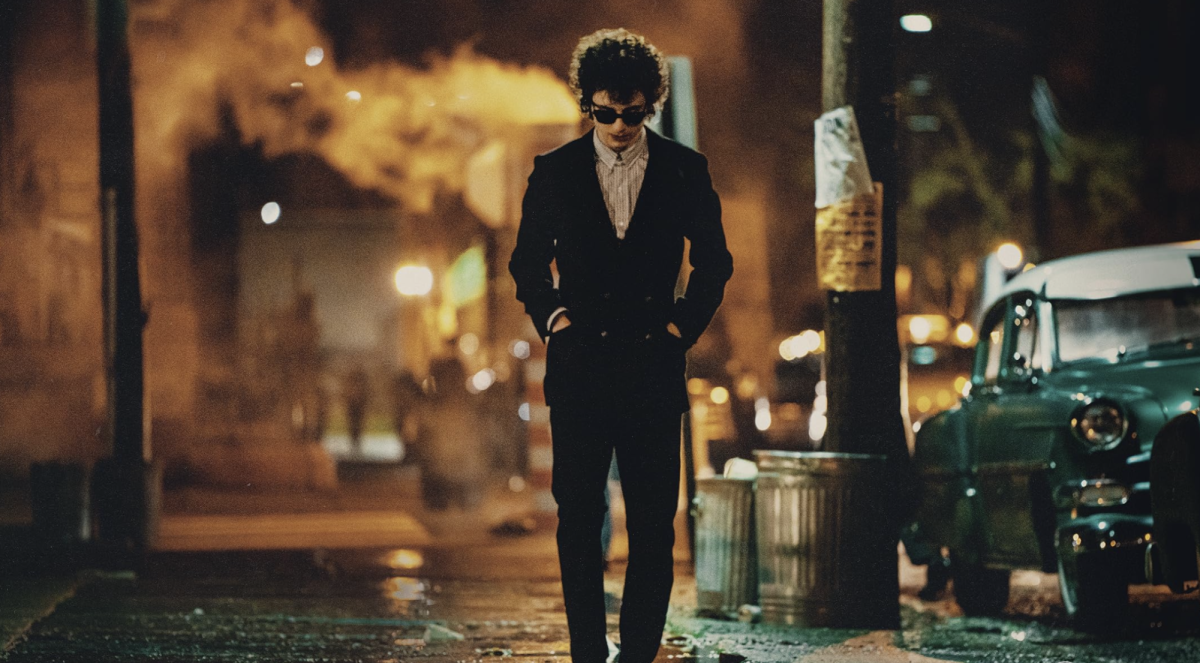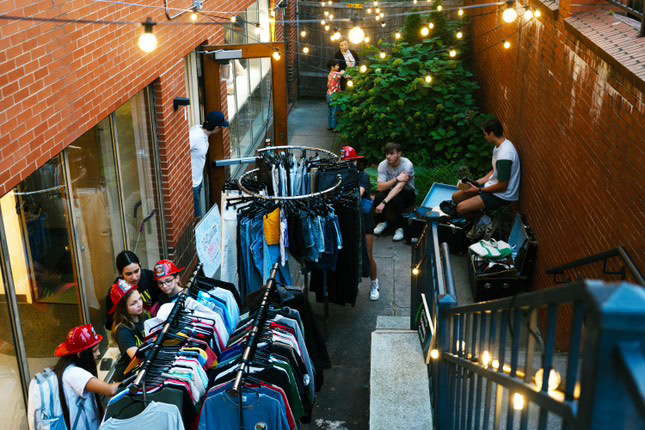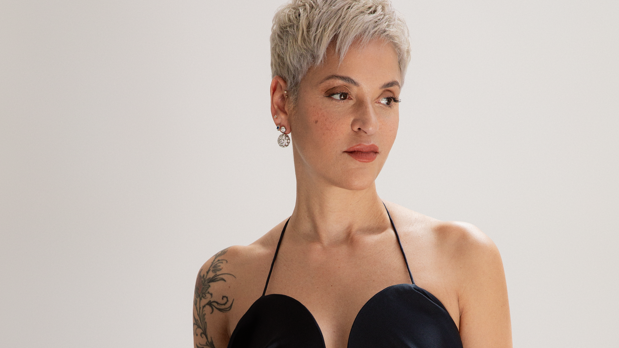After a three-year hiatus, Garrett Seamans is back as Postcard Boy (a.k.a carwash.)
Postcard Boy’s lyricism captivates his audience by invoking nostalgia with ease and using broad language that appeals to the general public while still being relatable.
In a time where new trends come and go in a flash, Seamans built his following by being in touch with his lifelong passion for creating. Originally from San Diego, Seamans developed a name for himself in the creative industry by creating surf videos with friends and working on photography projects with big names, such as Emma Chamberlain. In 2018, Seamans debuted his song “I Hope the World Never Ends.”
On April 26, Postcard Boy dropped “On The Hillside,” the title track off his debut album which is set to release this summer.
On Tuesday, April 25, I met with Seamans over a Zoom video call. In an hour-long conversation, he talked about his inspirations, connection to writing, his aliases, new music and advice for aspiring creatives.
This interview has been edited for clarity.
How early on did you start creating and producing music? What was the inspiration?
I would edit surf videos when I was in middle school to EDM, kind of when Soundcloud was owning the electronic scene. When I got into high school, I was into more indie-pop and rock and the alternative scene. That’s when I started producing the Postcard Boy stuff. The vocals were still influenced by electronic music but some of the instrumentals were getting more alternative.
I don’t know exactly when I started. My mom’s full side is Filipino and all the grandparents would come over for holidays, and they would sing around the piano. No one was a musician as their career, but everyone appreciated music.
I did actually play saxophone when I was in fourth grade and that was the first instrument I ever played. I tried to join the school band, but I hated the environment of the it and the pressure of everyone else playing the same part and the conductor telling you what to do, so I stopped doing that. My older sister got a ukulele, and then I wanted one. I don’t hear about many artists that I listen to in interviews ever mentioning older siblings, so I always try to mention mine. I wouldn’t have done a lot of things if it weren’t for me trying to copy her.
Who is your ideal musician to collaborate with and who are your biggest influences in the music scene?
Caroline Polachek or The Japanese House are people I really liked while making this album. I also have to say Bon Iver and James Blake, Toro y Moi and I’ve always liked Blood Orange. I started bumping Frou Frou as well at that time and that changed the game.
You have these two aliases: Postcard Boy and carwash. What has made you keep the two separate and what is the distinction?
I had the “Limbo” EP done, but it wasn’t going to come out for seven months or so because of the way the rollout was. But I already had the demos for “striptease” and “supermarket” done before I even moved to college. So, I was like I might just start a side project.
Sonically, Postcard Boy is more like those artists I named that are kind of experimental and have electronic elements that still make pop music. Carwash is more of an alternative rock influence.
What is the backstory behind the names Postcard Boy and carwash?
For Postcard Boy, I had written the chorus of this one classic indie rock song with my sister at home and there’s just the line that said: “can I be your postcard boy.” It was something about if you moved away from somebody or if you split ways with somebody, you could be in touch via letters. That song never became a thing, but I always liked the name Postcard Boy.
As for carwash, I have no clue. I have a list of a stupid number of aliases that I think are funny that I would go by.
You mentioned that this album is going to be under Postcard Boy. What made you come back to Postcard Boy after concentrating on carwash for so long?
I felt like there was this unfinished hole; I would have let myself down if I didn’t see it through. And I know that feeling would have eaten at me. Also, after doing the carwash stuff I wanted to go back to the sound that I had started with, but hadn’t fully fleshed out as my own. There are also just a lot of visual ideas that I had in high school that I wanted to see through. It’s been pushing me visually to “up” myself every single video, and that’s been super stressful, but also so rewarding.
You have this journal club called junk mail club, which connects you to your listeners on a much personal note. How has writing influenced you?
I’m not a huge fan of being on social media all the time and so I started junk mail club as my way to try to stay in touch with fans without having to overshare, but I probably overshare honestly more in junk mail club than I would if I just posted a photo on Instagram. But, it feels nicer to compartmentalize the time like that.
I’ve always journaled every single day, and I have this stack of eight of those moleskine journals and stuff since I’ve moved into this apartment three years ago. If I didn’t journal, then I would be going insane. I just put everything into there and once it’s in there, it’s not mine anymore. I don’t have to hold that weight.
Honestly, the lyric thing on Spotify where you can click the microphone is so cool. I’ll just sit in my bed and I’ll just play songs and read the lyrics and it’s game changing. Some of the songs that I thought were happy songs and you read the lyrics and you’re like “oh my god.”
Beyond music you are also an avid visual photographer and videographer, can you tell more about how you got started and continue to showcase it in music videos? How has it been transitioning from capturing the essence of others to expressing what is within yourself via Postcard Boy?
Recording most of it was a really big challenge. It’s been really good for me to think a lot about how I want to be seen and do I even wanna be seen? I feel like now it has shown me that I can do all the processing stuff with my voice, but now it’s more interesting to me to see … what different melodies I would write if I was forced to not use any tune and I’ve been enjoying that more recently because you can hear a lot more of the emotion when it’s imperfect … I love emo music and I’ve been singing more like that and doing some screaming, too. My voice works well for it.
I would love to [be a] creative [director] without having it be my own music and without having me to be the face. I feel like I’m a bit more introverted in a sense, but I have a lot of ideas I never get around to doing for my own art, or that wouldn’t align for who I want to be.
As we continued talking, the conversation took a personal turn.
Seamans: How do you see me as an artist, do I seem like an entertainer kind of personality, or do I seem more quiet? I’m just intrigued because I feel like the way that you interpret yourself and the way others interpret you is different.
Raja: I feel like with Postcard Boy and carwash, I view them very distinctly, because I think I was there for so long but carwash has been you from the background, with a lot of the visual single covers and album covers have been — I’m assuming your friends — and you’re kind of behind the scenes. So, from that perspective I think you’re very much introverted behind the scenes but then Postcard Boy has been more of your thoughts and especially with “Limbo” I think it’s just been kind of like viewing your journal so you’re more personal with it.
Seamans: Yeah, that’s interesting. I mean I definitely was posting more day-to-day stuff at that time. I feel that now I only really post if I have something to say about the music and stuff which for me is nice but maybe as a fan you probably feel maybe more distant.
Raja: I think those early Zoom days, like 2020, I felt a lot more connected to you which is weird because I probably only just started listening to you for a year before that. Now, I feel like I’m watching you more from the sidelines.
Seamans: Yeah, that’s interesting. I was actually planning to do a Zoom soon with people. I don’t think I ever did that with carwash, but it’s nice to do the Zoom because it’s never like 200 people are going to show up to a zoom. It will always be like 20 or under which is nice, you can chat. But it’s interesting to hear how you feel, because I don’t talk to anyone, like fans, ever. Or not like this, in such a personal way, so it was nice to have a perspective like that.
What is the significance of your forthcoming album? What does it mean to you and how rewarding has it been? How are you feeling about it compared to your older work?
It feels very full circle to come back to Postcard Boy. I listened and I made the project so much while on my bike at sunset, right here by the beach. A lot of the music was consciously in the back of my head.
My favorite time of day is right after sunset, when it’s kind of blue before it’s dark. For the album, I wanted people to always start right as the sun is setting and finish it (it’s 40 minutes long) when it’s becoming that time of day.
I’m really happy I finished the album because it feels like I can close off that time period of me making something and do something else going forward. A lot of the album is written from a time that is very different to where I’m at now and so there is a distance between the version of me now versus what exactly I’m saying on the album.
It’s always interesting when you have to talk about the music when it’s coming out, but once it’s finished it’s almost like a past version of you and you’re so ready to go onto the next thing. I think now I can see it for what it is, rather than being really in the thick of it. I’m just happy that it’s going to be the version of Postcard Boy that I would like to have in existence and not something else.
What has been your favorite live performance of yours? Do you have plans to go on tour again soon?
My favorite live performance was for sure [the] one that I played in L.A. in October of last year. It was at this venue called El Cid which is a 200-cap venue so it’s really intimate. My mom and dad were there, and a bunch of homies were there, and we just played so good. I wasn’t nervous at all when we went on stage; we had played these shows already on the East Coast.
There were these high school kids and they were just so hype. I wish it would have happened every time, but these kids were on shoulders and they had people with signs and stuff and that’s nuts.
For playing shows in the future, I really want to do an in-person experiential thing in L.A. for the Postcard Boy album release, where the bouncy house is there and the fans can go inside of it and have the stamps that I’ve been doing for the pre-saves printed out on a large scale and raffle them off.
I’m very particular about how I imagine doing the live set. There are a lot of physical pieces that I wanna have people see in real life rather than just in the videos but that’s it for the live stuff. If I can do the in-person stuff like where people can see the world, that would be ideal, otherwise if it just lives on in the videos or with the book…I think doing it on a smaller scale and just jumping around on stage with a mic would be kind of an injustice to the music and the care that I’ve put into the stuff so far.
Do you have any advice for people wanting to get into the creative space i.e. music, photography, film, etc.?
I think now more than ever, it seems like it’s overly polluted and saturated with a lot of people doing stuff and so you have to really trust whatever your initial kind of instinct is when you go to make whatever it is that you’re making.
What you gravitate towards off the bat is what makes your taste unique and that’s the reason why everyone can make different art. because people are going to naturally write different melodies or have different sentences, cadencies or they’re going to see something in a photograph that you wouldn’t have composed.
I think it’s just tough with TikTok and stuff when things blow up, people get caught up by trends or what’s working, but none of that will really last. If you stay doing your own thing and you really trust yourself always, it’ll never get old.
You kind of have to always ground yourself and ask yourself, “why is it that I started doing this in the first place.” I ask myself all the time if I get frustrated, “am I mad at making the art or am I mad at something external that is affecting the art itself?” It’s pretty much never the art and if it’s the art, it’s just writer’s block or whatever it is that you’re having.
This past weekend, it was my grandma’s birthday and we’re just eating Filipino food and sitting outside in the backyard for seven hours. When you reground yourself in an experience that’s human connection and sincere like that, you realize that being frustrated over not writing a lyric, or something like that, is so pointless and meaningless in the grand scheme of a world where there’s really lovely people and places to be seen.
Kaviya Raja can be reached at [email protected].


